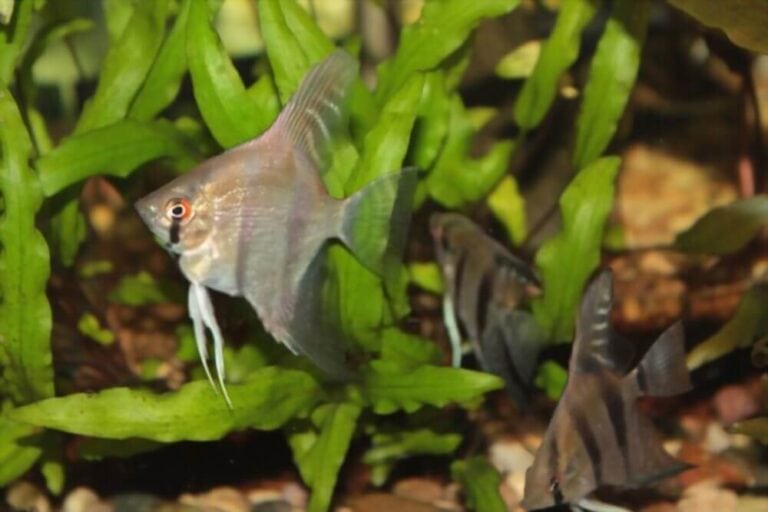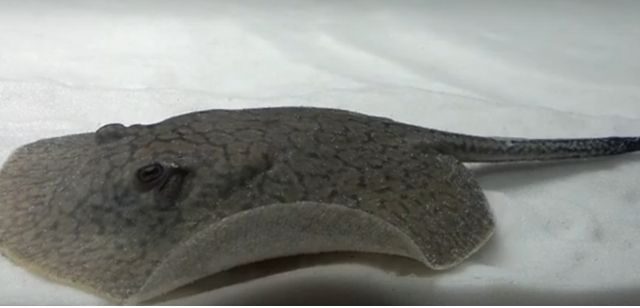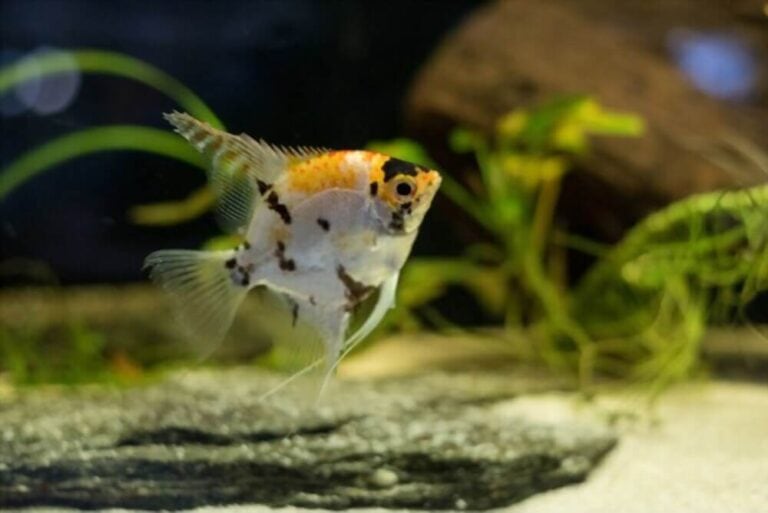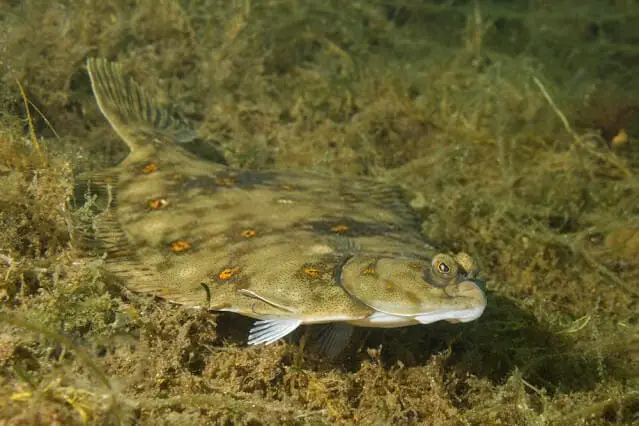Rainbow Parrotfish: Habitat, Diet, & Facts
When you take an interest in a Parrot’s beautiful colors, you will also be intrigued by what is known as Rainbow Parrotfish. However, their size, nature, and design can be different than parrots.
The Rainbow Parrotfish have a very distinct and unique appearance. So, they are not confused with other species. They have a different beak profiles.
The Scarus guacamaia rainbow parrotfish is a popular herbivore. Whose history of life is strongly connected to a reliance on both coral reef and mangrove ecosystems.
Where Do Rainbow Parrotfish Live?
The Rainbow Parrotfish is a native of the Atlantic Ocean’s Mexican waters but has a small range that can only be found in coastal waters adjacent to the Yucatán Peninsula in the Mexico Gulf and the Caribbean.
Appearance
The Rainbow Parrotfish is a big fish with a moderately compressed, robust, elongated, and oblong body. Based on their process, they differ significantly in color.
Diversity in appearance can be seen based on the age of the rainbow parrotfish. The young are reddish-brown, and their edges are bronze. The center scales and lines around their eyes are green, and their chests, fins, and some portions of the head are orange in color.
The adult fish are half black at the back of their body and half bronze at the front of their body. The borders and bases are green, while the center of the anal and caudal fins are orange.
They have a rounded blunt head. The three fins are composed of spines and rays. Their anal fin is composed of 3 spines and 9 rays. The dorsal fin has 9 spines and 10 rays, while the pectoral fin has 16 rays.
They have fifty-one to sixty-four-gill rakers. Their body is wrapped in large sizes. They have typical parrot-like teeth used to crush skeletal coral materials because they are detritivores that eat detritus and bacterial complexes and small benthic invertebrates.
Size
The Rainbow Parrotfish is found at depths up to 23 m (75 feet) in coral reef environments. Juveniles can also be seen in mangroves. It is the gigantic parrotfish in the Caribbean, and it has a maximum size of 1.3 m (three feet and eleven inches).
When they are under pressure, they hide and sleep in the homemade caves. An average rainbow parrotfish can live up to 16 years.
Rainbow Parrotfish Habitat
Using their pectoral fins, they swim around reefs. The tail is only used for speed bursts. They use their ‘beaks’ to remove coral algae and polyps. They are also seen defecating, which appears like white clouds that consist mainly of coral limestone.
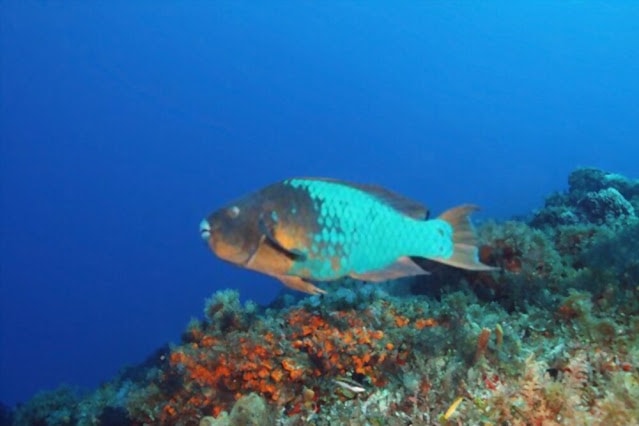
The parrotfishes have two kinds of reproductive behavior, just like wrasses. The younger and less colorful males fertilize a single female’s eggs along with other males. While colorful, big males each have their territory where one male fertilizes a female.
Also, the spread of these species is regulated by the variable habitat’s structural nature and the vegetation available at different levels. Herbivory, calculated by grazing levels, was found to be the highest at the site of the most incredible ecosystem complexity.
The reason for expanded fish abundance is that the increased availability of shelter and abundance of food leads to higher Herbivory rates.
Herbivory was observed to grow away from uneven seagrass regions. While expanding distance from a reef decreased herbivory rate due to reduced fish migration.
Moreover, higher herbivory rates can be due to ongoing grazing by the juveniles and scarids, and it might not last for a long time.
Rainbow parrotfish travel through environments based on their lifestyle experience and grow as large as possible before heading to the next habitat.
The use of intermediate nursery environments was hypothesized to promote small fish survivorship. During the early development period, the transitional nursery stages between the mangroves, seagrass, and uneven reefs act to reduce the marine bottlenecks.
A predatory bottleneck occurs when competition from predation prevents the reproduction of a significant population percentage.
The presence of seagrass beds has also been correlated with slightly higher rainbow parrotfish densities on coral reefs. However, other studies have found different results concerning these nursery environments.
The increased numbers of the adults and juveniles of the S. Guacamaia seen in the coral reef community and the mangroves’ total absence imply that the mangroves are not the mandatory habitat in some areas for nursery, growth, and breeding the seagrass and coral debris serves as a preferred alternative.
Rainbow Parrotfish Diet & Eating
They will travel around large areas in search of food. The rainbow parrotfish plays a critical role when it comes to bioerosion issues because of their feeding habit. What do parrotfish eat?
They should be able to scrape algae from rocks using the sharp beak. It will also help with coral sand preservation and protection for the reef biome. When feeding, they grind up small rocks, and they produce sand as they excrete it.
Rainbow parrots also serve to keep the coral reefs safe by keeping algal populations regularly in check. The word “parrotfish” comes from their front teeth, which are fused like beaks.
These teeth help them in adapting and allow them to eat coral-living algae and also the coral. At the same time, they can use the teeth to scrape off carefully and ingest algae. They are often powerful enough to bite off large pieces of coral.
Their second set of teeth in their throat is used for crushing the coral into small pieces so they can easily swallow them down. It is unknown if the algae or coral polyps are derived from the coral they eat.
What Do Guppies Eat? ( Diet Guide)
The rainbow parrotfish eat a considerable amount of algae from their habitat. This mechanism helps to establish a natural equilibrium of elements in their climate. It is because they feed on so many algae that people mostly think they are herbivores.
They also eat several different small microorganisms that are also present in the water. They can also eat coral polyps found in their natural habitat.
The rainbow parrotfish are often called herbivores. They mostly get food from the coral reefs, with their diet consisting primarily of algae, seaweed, and marine organic matter.
The specialized teeth help in scraping algae off the surfaces of corals. The freshly hatched larvae start feeding after three days but how long this period lasts is unknown. They may also form large groups to eat and to deter predators.
Rainbow Parrotfish Facts
1. The rainbow parrotfish are used mostly for decorative and esthetic use.
2. They are not eaten due to the accumulation of toxins, as their flesh can be toxic.
3. Typically found inside depths of 3-25 m in sheltered coral reefs. They shelter in gaps and corners at night to protect themselves.
The youngsters are found primarily in mangroves near coral reefs. But they can also be found in ocean rocks, usually in shallow waters.
The young fish of this species are found in mangroves as they act as a healthy refuge free from any predators and with a rich nutritional supply for their living purpose.
4. The Scarus guacamaia is identified as “nearly endangered” due to factors such as overfishing, human population growth, lack of protection of biodiversity through marine reserves, and continued interference and loss of their primary habitats such as coral reefs and mangroves.
According to others, Scarus guacamaia has become exceedingly scarce over the last three decades.
5. This is the largest parrotfish species and also the largest herbivorous fish in the Atlantic Ocean.
6. The maximum length is 1.2 m and 20 kg by weight.
7. The big males are different in color than females. Their color is brightly, mainly green and orange. Also, the head, fins, and tail are bright orange while the back is bright green. But, females and small fishes are not that much colorful as compared to big male fishes.
8. The parrotfish’s teeth are grouped, forming a rugged mouthpiece that looks like the beak of a parrot, where it derives its name. They have a pharyngeal system that displays teeth in bands located in the mouth and specializes in disintegrating food.
9. Individuals will experience three distinct phases within this species in the life cycle. The first stage consists of juveniles that are sexually immature and have a typical drab color.
The second phase is known as the initial phase, and in this phase, both males and females are sexually active. The final Terminal Process consists of only mature, brightly colored males.
10. Characteristics of the Rainbow parrotfish life cycle are fairly well documented.
11. They are called protogynous hermaphrodites because the members in this genus show a sexual transition in the initial period when they are male and female. This is a unique characteristic.
12. Rainbow parrotfish diet has been shown to differ across stages of life and ecosystems. The individuals obtained from the mangrove sites have sponge spicules seen as compared to those obtained from the coral reefs.
This implies the dietary preference changes are based on the availability of food sources. Coral is the secondary source of food.
It is a secondary source because the rainbow parrotfish is grouped as a corallivore, which means that the coral can be a significant portion of a minor part of their diet, and they do not depend solely on corals.
13. These fishes are mostly active during the daytime and are diurnal, and at night time, they bury themselves under the sand and rest in the reef corners.
The ability to shift gender from female to male is an uncommon trait most parrotfish share. All parrotfish hatch out in some species as females, and some of these later become males.
Nonetheless, a combination of females and males is hatched in most instances, and females can change gender only when the need for more males in a region occurs. When there are too few males, the female eggs may go unfertilized, and the population may decline.
Are Rainbow Parrotfish Endangered?
The Rainbow Parrotfish is known to be Near Endangered and has been fished to extinction in some areas.
The rainbow parrotfish population has been in serious decline, and the infrequent catches have been due to their scarcity, large size, loss of habitat (coral reefs and mangroves), and overfishing, mostly by spearfishermen, as they are easy targets as they forage in very shallow water.
It is prohibited to catch them for fishing at some locations and survive only in marine reserves. They have traditionally been a significant food fish caught in the Caribbean by subsistence and commercial fishermen using nets and traps.
They are considered to contain ciguatoxin. However, they are destroyed for coastal development and oil extraction. In the year 1960, the population of rainbow parrotfish was at its peak, as mangroves and coral reefs were still intact during this time.
It was recorded that the population of the rainbow parrotfish was substantially higher in areas that were protected than in those areas which had limited protection against overfishing this species.
Conservation measures for this species are classified as endangered and need to be given closer attention, as the wellbeing of this and other parrotfish can be useful in assessing the range and goals of management of coral reef habitats around the Caribbean Sea.
